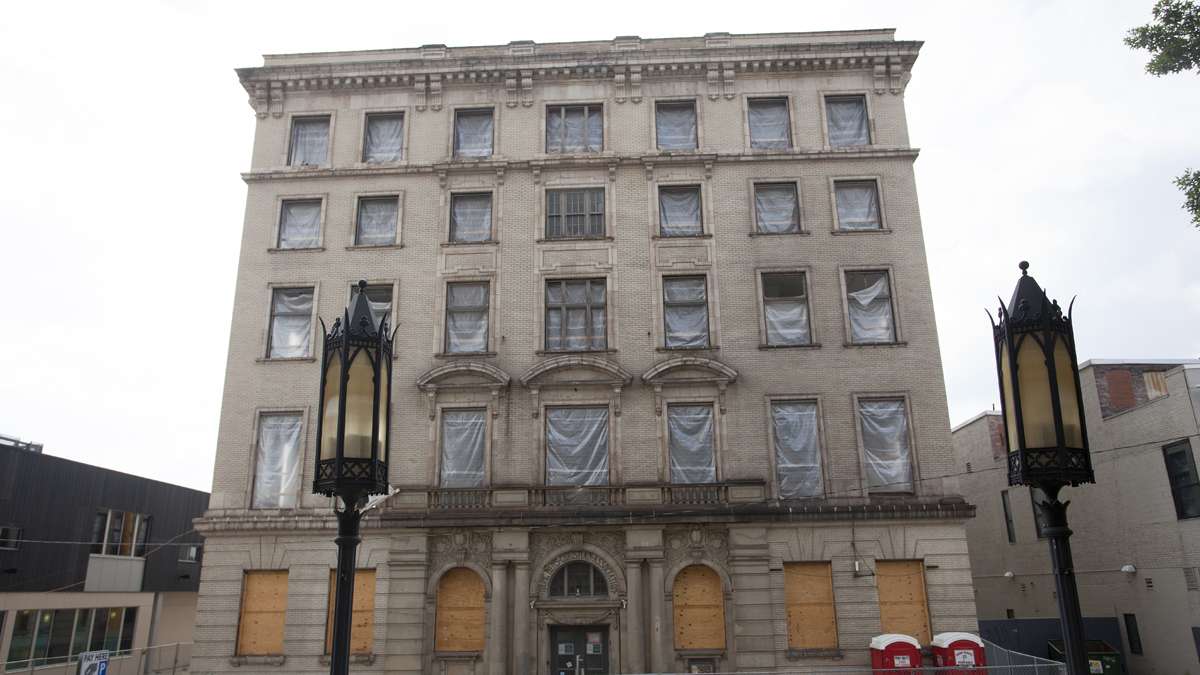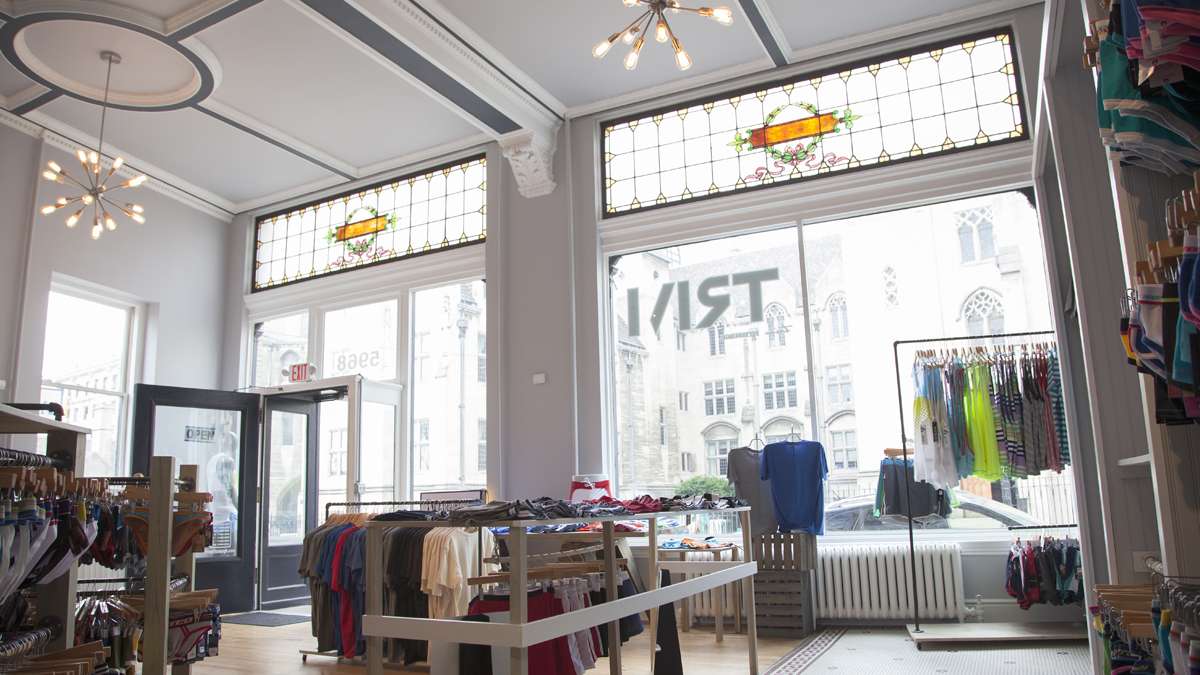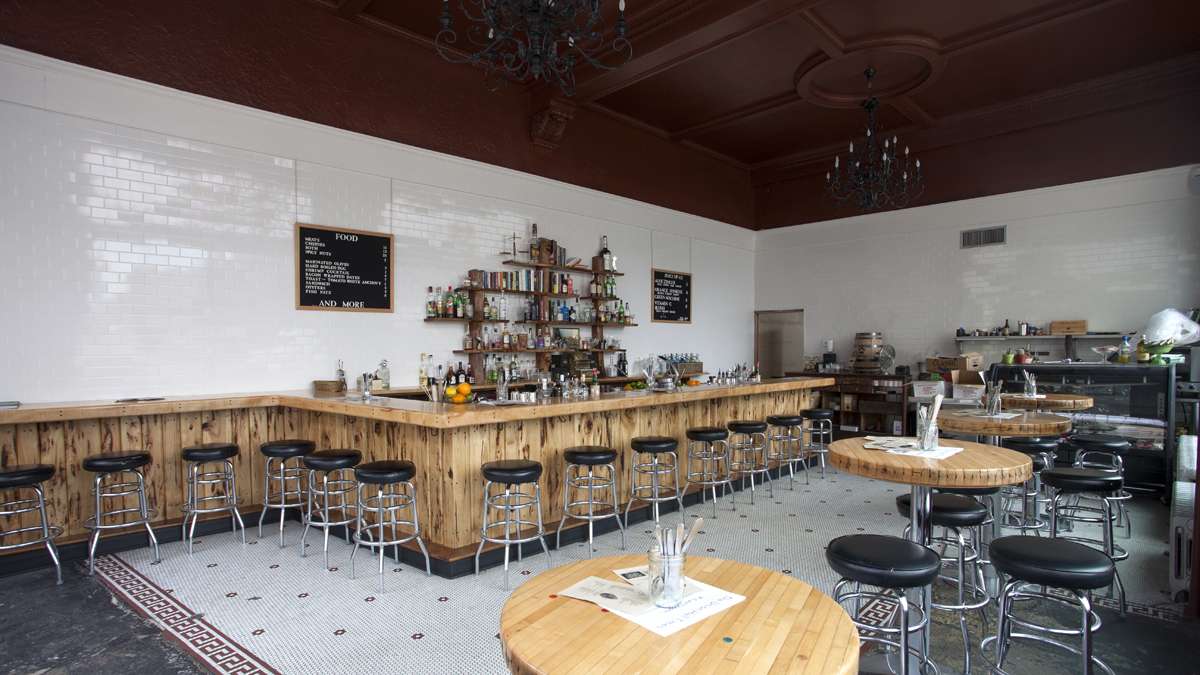Historic preservation as economic development: Pittsburgh mayor says yes, please
ListenPittsburgh Mayor Bill Peduto announced that he wants to use the city’s stock of aging buildings as a tool for economic development. Beyond Pittsburgh, too, Pennsylvania has no shortage of old buildings and some cities have long used them as a selling point. A new study measured the impact of maintaining older buildings in urban areas and concluded that for cities lucky enough to have them, leveraging them can bring improve development.
Space with history
Eve Picker, a Pittsburgh-based developer, has been redeveloping old buildings for years. Her historic Werner Building in the East Liberty neighborhood is undergoing renovations in preparation for some new tenants.
The upstairs houses artists and small businesses, and downstairs there’s a popular bar, and a pizza shop coming shortly. They’re all startups. These innovators, said Picker, “want to occupy a space with history.”
“This area of East Liberty is revitalizing itself, so that’s why we kind of were excited to be in this neighborhood, and then when we saw the space we were like, this is it,” said Adam Childers, who along with Tom West owns Trim Pittsburgh, an underwear store in the Werner Building.
A previous tenant, a hair salon, hadn’t taken care of the space’s historic look. But today Trim Pittsburgh occupies a room with big windows, tall ceilings, and beautiful hardwood floors. The floors are polka-dotted with burn marks, which West and Childers says they “lucked out” with. Nobody’s sure whether the burns came from the hair salon or a pizza shop that used the space before that. West and Childers recently saw a vintage painted sign with their store’s address advertising a rubber company, so they think the burn marks could have originated from that, too. Joining the lineage of businesses that once used that same space excites them.
Picker loves her old properties and, as their curator, the role she plays in the city’s transformation. But she also readily admits that she could make a lot more money developing new buildings, because it can be more difficult to bring old buildings up to code and repurpose them as needed. “The financial problem is more that when you find an old dilapidated building, it’s usually in a neighborhood that hasn’t been raised up yet. While it may seem cheap, it’s expensive to renovate and you can’t really get a return, so it’s a waiting game,” she said. She’s owned the Werner for 8 years and “hobbled along” most of that time in the blighted East Liberty neighborhood. “It was very tough.”
Better to limit preservation?
Preservation critics say limiting preservation, as opposed to a “preserve everything” approach, leads to more vibrant urban areas. Pittsburgh History and Landmarks Foundation President, Arthur Ziegler acknowledged that any living city will ultimately need new building stock to stay dynamic. But he said it’s worth the trouble to preserve aging architecture in the mix, as well.
“You do not see people flocking in to see modern buildings, you see them flocking in to see historic buildings and historic streets. They attract retail in a downtown area and a Main Street area. And retail loves density and it likes buildings right at the sidewalk, and that’s what old buildings present,” he said.
New report: preservation attracts good things
Preservation has been a development strategy in some cities for years. But a recent report by the National Trust for Historic Preservation quantified the advantages. The study found that older buildings housed more young people, more start-ups, and more nightlife. The Trust’s lead researcher on the project, Michael Powe, said older buildings have the advantage of scale – they’re smaller – but also older buildings are often paid off, owned locally, and end up having more small, non-chain, and women and minority-owned businesses. “So independent from the size, age does matter,” said Powe.
Those things are significant for cities trying to attract young people and entrepreneurs.
And it’s not just the officially recognized historic buildings and districts. Yes, they benefit from preservation tax credits and, Powe says, that’s important, but so are just run of the mill old buildings. “We think that just everyday sometimes just kind of crummy older buildings are actually really important and that you need a little grit, you need some creaky floors to actually have a healthy economy.”
Pittsburgh’s mayor uses government resources to support preservation
Mayor Bill Peduto said creaky floors are something Pittsburgh has a lot of, though he called it uniqueness.
“What people want in a city isn’t to be in a city that just has development occurring, but they want uniqueness and authenticity, and Pittsburgh has it and I don’t want to use government money to lose it, I want to use government money to enhance it,” he said.
Pittsburgh’s Urban Redevelopment Authority (URA) estimated that about 10 percent of its overall budget goes towards preservation projects; 40-60 percent of the agency’s development budget funds preservation. Peduto is directing the URA to prioritize projects that focus on preservation, and “put the yellow light” on development projects looking to demolish those assets.
Already, across the Commonwealth, in Philadelphia and smaller cities, millions of economic impact dollars have come from historic preservation projects. In Philadelphia, too, such efforts have built a robust tourism industry around the city’s historic buildings. But many old buildings that don’t appear on one register or another also go unused, or are demolished.
West, who owns the underwear store in Pittsburgh, says he’s glad the Werner was spared. “If I have grandkids or something like that and they’re like, ‘That’s where grandpop used to have the store,’ that’d be awesome. An underwear store. That’d be pretty awesome.”
WHYY is your source for fact-based, in-depth journalism and information. As a nonprofit organization, we rely on financial support from readers like you. Please give today.







